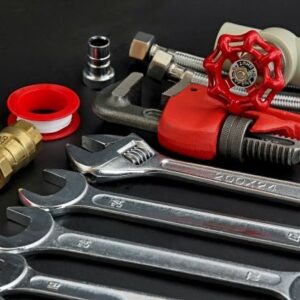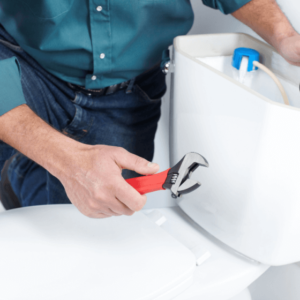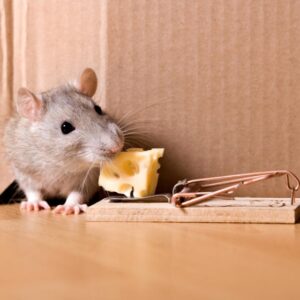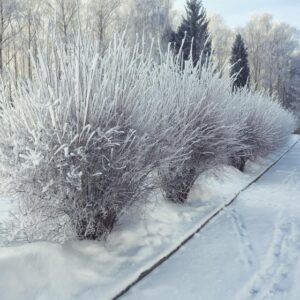The unsightly yellow or brown spots on your otherwise lush, green lawn often are the work of man’s best friend, whether it’s your dog or a neighbor’s. While it’s true that once you see the dog lawn spots, it’s too late to prevent that damage, you can take steps to prevent them or repair them once the damage is done. Keep reading to learn more about removing dog spots from your grass.
Step 1: Train Your Dog
Getting rid of yellow spots on the lawn starts with your dog. Training a pet to eliminate waste in a selected area in your yard can keep the spots confined. Or better yet, create a graveled or mulched area where your pet can eliminate waste. When your dog signals the need to go outside, leash and walk your dog to the specific area. Use a command (a short command/word such as “potty”) in an assertive tone and wait for your dog to eliminate waste in the desired location. Afterwards, reward your dog with vocal praise, petting and a treat, if warranted. No matter your dog’s age, this process may take time. Be patient and encourage your dog to use the selected area. After the process is instilled and your dog begins to use the same spot, you can stop using the leash and stop directing your dog’s behavior.
Sometimes, though, you can’t teach an old dog new tricks. In these cases, consider constructing a dog run or dog kennel in your yard to keep your dog contained.
Step 2: Soak It
Soaking your lawn can be one effective way to reduce your issue with spots left behind by your dog. Try to take note of where you see your dog urinate, if it’s not obvious by the yellow patches in the grass. You want to soak these areas excessively with water from a hose. Use a lot of water; the more you saturate the spot, the better. The longer the urine stays on the grass, the more damage it does, so if possible, spray the spot after the dog urinates. If you use a sprinkler to water your lawn, this is helpful too because it helps wash away dog urine consistently. However, a lawn sprinkler alone typically does not provide enough water to keep the damage from happening.
Helpful Tip
Before deciding that yellow spots in your lawn are the work of a dog, verify that is the case and not the work of grubs or lawn disease. Try pulling on the grass at the yellow patch. If the grass does not pull up easily, you are most likely dealing with urine spots. If it can be pulled up easily, it could be something else that is causing the spots.
Step 3: Spot Treat
Lightly spread horticultural lime over the affected spots made by your dog. Follow the directions on the package closely to avoid using too much horticultural lime. Using too much horticultural lime can have the opposite effect and do more damage. Thoroughly water the dog urine spot again. Water the spots every day. Eventually, the natural green color of the grass will return. If it doesn’t return in a few weeks, you may have to dig out the area and re-seed.
Helpful Tip
Consider dietary supplements for your dog that naturally decrease the effect of excess nitrogen on grass. Consult with your veterinarian before you start any kind of dietary supplements.
Step 4: Repair/Re-seed
Use a hand rake to tear out the old, dead grass and loosen the soil about 1” to 2” deep. Sometimes you have to “patch” your lawn by tearing up the dead grass area and re-seeding. Dispose of the old soil, as it is most likely saturated with nitrogen. Add new topsoil along with a layer of organic compost or peat moss. Before seeding, add gypsum to the seed mix to help neutralize nitrogen levels. Put grass seed in the area according to package instructions. Apply a starter fertilizer to help with germination. Note: Be careful when using fertilizer—the wrong formulation or amount may have a reverse affect and increase nitrogen concentrations. For advice, ask an expert at your local True Value® hardware store.
Try to keep traffic away from that area until the grass is well established—usually about 10 to 14 days after sprouting.
Helpful Tip
You can add hay or straw mulch to facilitate sprouting. This helps prevent soil erosion and cuts down on the need for frequent watering. But don’t use too much mulch—the more straw or hay you use, the more likely you are to get some weeds.
Use a garden hose or sprinkler to lightly water the re-seeded area two or three times a day, preferably during the early morning or early evening. Stick with this watering schedule until the new grass is about 1” tall. Once the grass reaches this height, you can cut back on watering to once a week until the grass is ready to be mowed.
Helpful Tip
Consider replacing your grass with a more nitrogen-resistant species, such as rye grass or fescue. Ask an expert at your local True Value hardware store for advice on which grass might be best for you based on your particular region and needs.
Step 5: Add a Fence
While you may be able to curb your dog’s behavior, there’s not a lot you can do about a neighbor’s dog. But you can build a fence around your property. Ask for advice from an expert at your local True Value hardware store to decide what type of fence is best for you.
Chain link fencing is easier to maintain and can be less expensive than other fencing. Wood fencing is more attractive because it comes in many different varieties and treatments, but it will need maintenance down the road. There are also prefabricated fences made of plastic, vinyl and metal.
Safety Alert!
Before digging to install a fence, check with your utility companies to ensure there aren’t buried pipes in the area you want to place the fence.
Congratulations! Now you’re ready to remove any dog urine spots that appear on your lawn.
Project Shopping List
Here’s what you’ll need to complete this project successfully.












